Entertainment
Xbox Cloud Gaming: The Future of Gaming Without Consoles
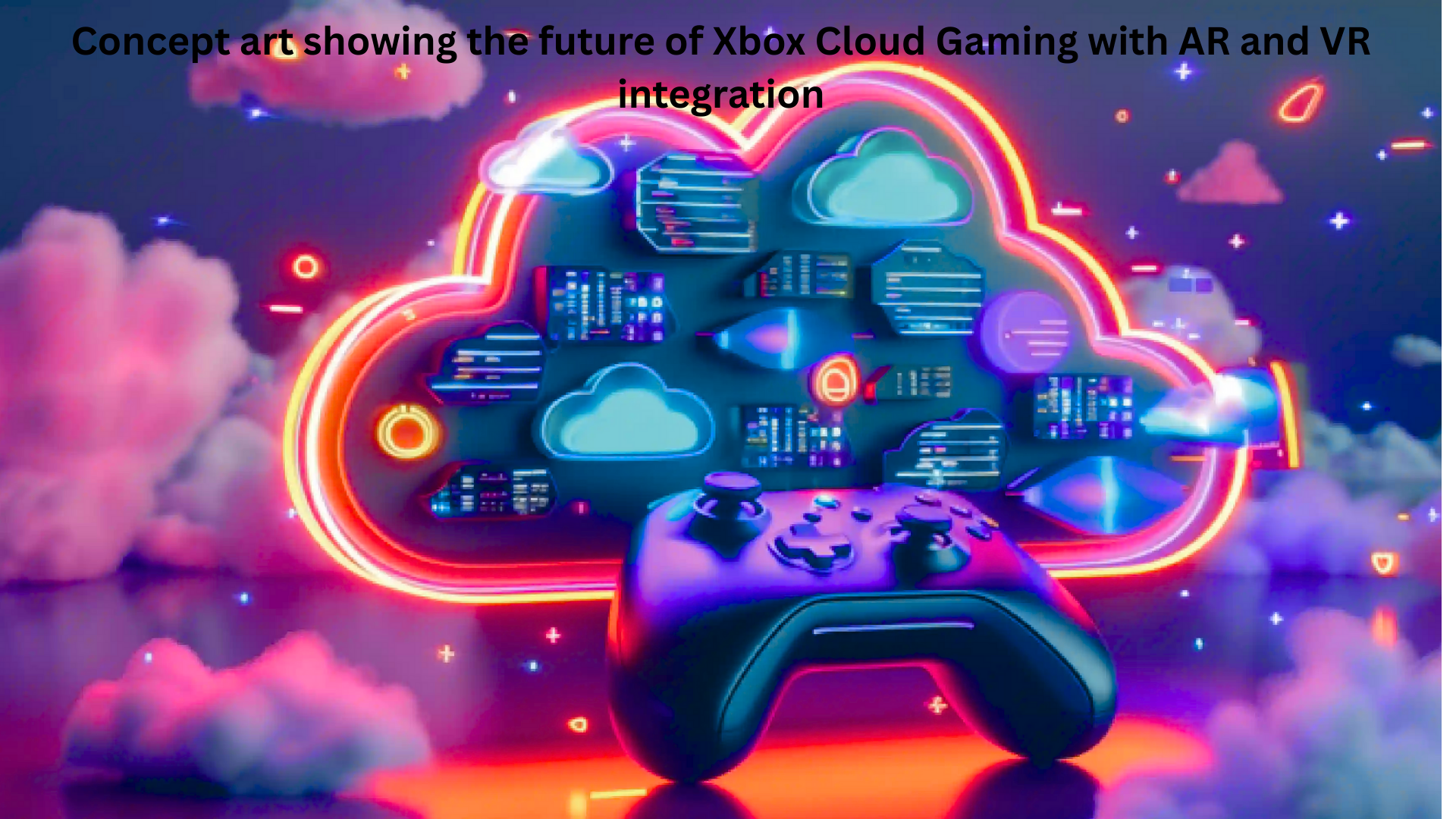
Introduction
Imagine being able to play AAA console-quality games without buying an expensive console or PC. Imagine streaming your favorite titles like Halo Infinite, Forza Horizon 5, or Starfield on your phone, tablet, or even a smart TV with nothing more than an internet connection.
This isn’t just a dream anymore it’s reality, thanks to Xbox Cloud Gaming (formerly known as Project xCloud). As part of Microsoft’s Xbox Game Pass Ultimate, this service allows players to stream games directly from Microsoft’s powerful servers to almost any device, eliminating the need for costly hardware and lengthy downloads.
In this blog, we’ll take a deep dive into what Xbox Cloud Gaming is, how it works, its advantages, challenges, and why many experts believe it represents the future of gaming.
What Is Xbox Cloud Gaming?
Xbox Cloud Gaming is Microsoft’s game streaming service, included with Xbox Game Pass Ultimate. Instead of running games on your console or PC, the games are hosted on Microsoft’s powerful Azure data centers. These servers run the game and stream the visuals to your device, while your inputs (from a controller, touchscreen, or keyboard) are sent back to the server.
Think of it like Netflix for games but instead of downloading, you’re streaming in real-time.
Key Features:
- Available through Xbox Game Pass Ultimate (a subscription service).
- Play over 500+ games from the cloud.
- Compatible with a wide variety of devices: smartphones, tablets, PCs, smart TVs, and even web browsers.
- Supports cloud saves, so you can continue your progress on any device.
- Integrated with Xbox Live multiplayer, so you can play with friends regardless of platform.
How Does Xbox Cloud Gaming Work?
Behind the scenes, Xbox Cloud Gaming relies on Microsoft Azure cloud technology. Here’s a simplified breakdown:
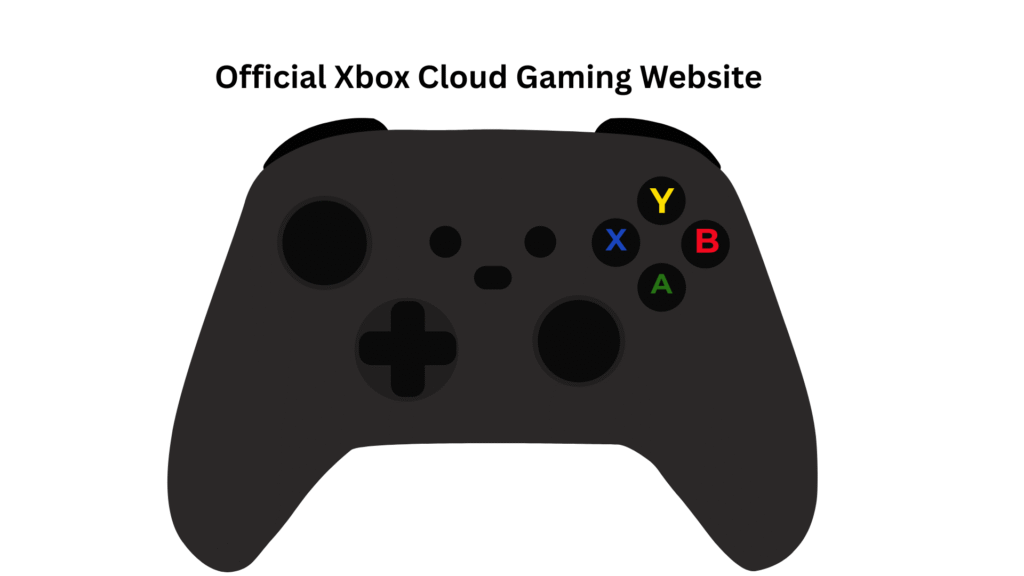
- Game Runs on Remote Servers
- Instead of rendering the game on your device, it runs on a server with Xbox Series X-equivalent hardware.
- Video Stream Sent to You
- The server compresses and streams the video feed to your device in real-time.
- Inputs Sent Back to Server
- When you press buttons on your controller or touchscreen, the input is sent instantly back to the server.
- Low Latency Synchronization
- The system works hard to keep latency low so the game feels smooth and responsive.
It’s essentially the same principle as cloud computing, but optimized for interactive gaming.
Devices That Support Xbox Cloud Gaming
One of the biggest strengths of Xbox Cloud Gaming is its wide accessibility. You’re no longer tied to a console or gaming PC.
Supported Devices:
- Mobile Devices: Android and iOS smartphones via app or browser.
- PCs & Laptops: Through the Xbox app or browsers like Edge and Chrome.
- Smart TVs: Samsung Smart TVs (and others with Xbox app support).
- Consoles: Xbox Series X/S and Xbox One can stream games, letting older consoles play next-gen titles.
- Web Browsers: Works with Edge, Chrome, and Safari.
Controller Options:
- Xbox controllers (wired or Bluetooth).
- PlayStation DualShock 4 controller.
- Touch controls (on-screen buttons for supported games).
- Recently added support for some third-party controllers.
Benefits of Xbox Cloud Gaming
Cloud gaming isn’t just convenient it’s transformative. Let’s look at the biggest benefits:
1. No Need for Expensive Hardware
You don’t need to buy a $500 console or a $2,000 gaming PC. A modest device with a good internet connection is enough.
2. Instant Play
Forget waiting for huge downloads or patches. With cloud gaming, you can start a game almost instantly.
3. Portability
You can switch devices seamlessly. Start a game on your Xbox at home, continue on your phone while commuting, and finish on your laptop.
4. Access to Hundreds of Games
With Game Pass Ultimate, you have access to a rotating library of 500+ high-quality titles from all genres.
5. Next-Gen Gaming on Old Devices
Even if you have an old Xbox One, you can stream Xbox Series X-quality games to it.
6. Save Storage Space
Games no longer eat up storage space, since they aren’t installed locally.
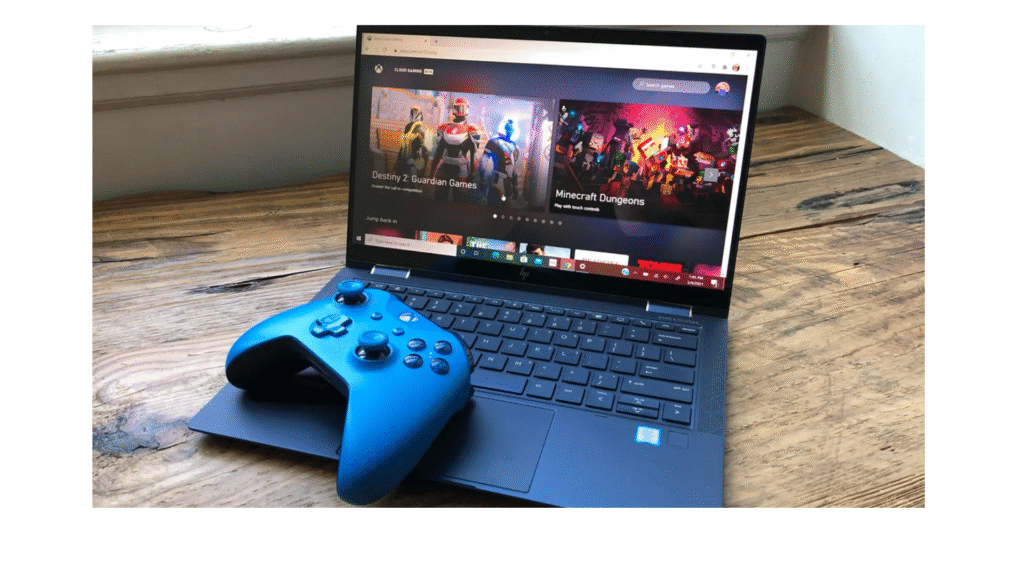
Challenges and Limitations
Despite its potential, Xbox Cloud Gaming faces a few hurdles:
1. Internet Speed & Stability
Cloud gaming requires fast and stable internet. Microsoft recommends at least 10 Mbps (mobile) and 20 Mbps (console/PC) with low latency.
2. Input Lag
Because inputs must travel to the server and back, there’s always some delay (latency). For most games, it’s fine but competitive shooters may feel less responsive.
3. Data Usage
Streaming games consumes a lot of data. One hour can use 2–4 GB, which is a problem for people with limited data plans.
4. Game Library Gaps
Not every game on Game Pass is available for cloud play. Publishers may restrict certain titles.
5. Controller Dependency
While touch controls exist, they aren’t ideal for all games. A physical controller often provides the best experience.
Xbox Cloud Gaming vs. Competitors
Microsoft isn’t the only player in cloud gaming. Here’s how it stacks up against rivals:
1. Google Stadia (Discontinued in 2023)
- Stadia was once a strong competitor but failed due to a weak library and lack of adoption.
- Xbox Cloud Gaming survived because it’s bundled with Game Pass, making it more appealing.
2. NVIDIA GeForce NOW
- Focuses on streaming games you already own (Steam, Epic).
- Offers higher graphics fidelity in some cases, but doesn’t include a bundled library like Game Pass.
3. PlayStation Plus Premium (Cloud Streaming)
- Sony’s service allows streaming of older PS3 and PS4 games.
- Limited in scope compared to Xbox’s next-gen cloud support.
4. Amazon Luna
- Subscription-based with “channels” for different publishers.
- Still small compared to Microsoft’s ecosystem.
Conclusion: Xbox Cloud Gaming currently offers the best balance of library, price, and accessibility.
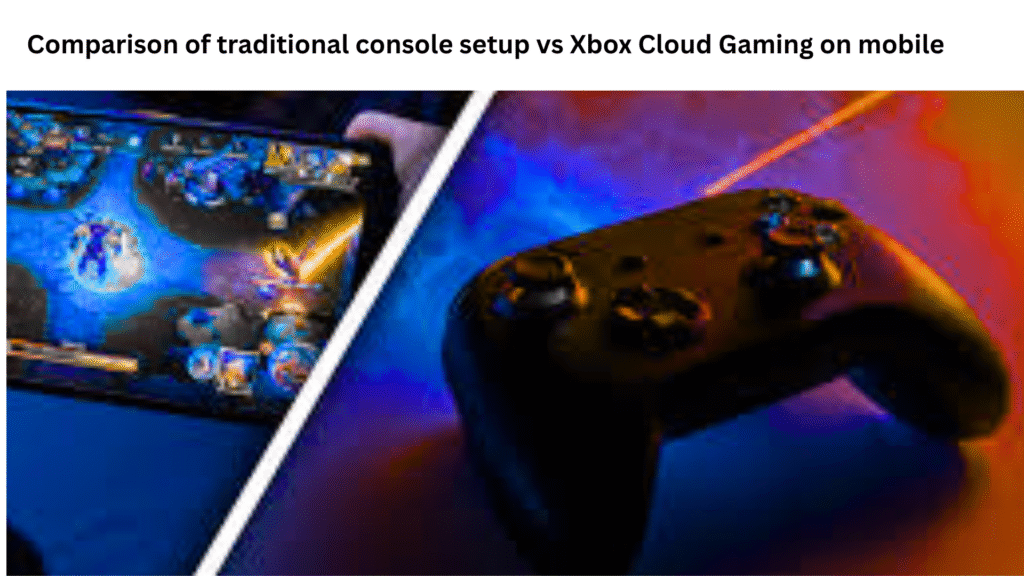
Who Should Try Xbox Cloud Gaming?
This service isn’t for everyone but it’s perfect for:
- Casual gamers who don’t want to spend thousands on hardware.
- Travelers who want to play console-quality games on the go.
- Students who only have a laptop or tablet.
- Gamers with old consoles who want to experience new-gen games.
- Anyone curious about next-gen gaming without upfront costs.
Tips for the Best Xbox Cloud Gaming Experience
To get the most out of cloud gaming, follow these tips:
- Use a Strong Internet Connection
- At least 20 Mbps for smooth streaming.
- Prefer Wi-Fi 5 GHz or wired Ethernet over mobile data.
- Use a Compatible Controller
- Xbox controllers provide the best experience.
- Play on the Right Devices
- A tablet or laptop gives a larger screen and better controls than a phone.
- Check Game Pass Cloud Icon
- Not all games support cloud play, so look for the little cloud symbol.
- Optimize Settings
- Close other apps using internet bandwidth.
- Keep your device charged to prevent lag from power-saving modes.
The Future of Xbox Cloud Gaming
Microsoft has made it clear: cloud gaming is here to stay. In fact, they envision a future where consoles may no longer be required. Some developments we can expect:
- More Supported Devices: Expansion to more smart TVs, handhelds, and even VR headsets.
- Better Graphics & Latency: As internet speeds improve (5G, fiber), cloud gaming will feel even more seamless.
- Exclusive Cloud Features: Games designed with cloud streaming in mind, offering features impossible on local hardware.
- Global Expansion: Wider availability across more countries.
- Deeper Integration with Xbox Ecosystem: Seamless handoff between console, PC, and mobile.
Some even speculate that the Xbox Series X might be the last traditional console, with cloud gaming leading the way into the next era.
Final Thoughts
Xbox Cloud Gaming is more than just a convenience it’s a revolution. It breaks down the traditional barriers of gaming, allowing anyone, anywhere, with a decent internet connection, to access top-tier games. While it’s not perfect yet limitations like latency and internet dependency remain it’s improving rapidly.
For gamers, this is an exciting time. For the first time, you don’t need to choose between expensive hardware and access to great games. With Xbox Cloud Gaming, the power of Xbox lives in the cloud, ready to be streamed at your fingertips.
If you’re curious about the future of gaming, there’s no better place to start than with Xbox Cloud Gaming.
FAQs About Xbox Cloud Gaming
1. Is Xbox Cloud Gaming free?
No. It’s included with an Xbox Game Pass Ultimate subscription, which costs around $16.99 per month.
2. Do I need an Xbox console?
No. You can play on mobile, PC, or smart TVs without owning a console.
3. What internet speed do I need?
Microsoft recommends at least 10 Mbps (mobile) and 20 Mbps (PC/console).
4. Can I use it offline?
No. Since games are streamed, you need an active internet connection.
5. Which devices support Xbox Cloud Gaming?
Android, iOS (browser), Windows PCs, some smart TVs, and Xbox consoles.
6. Can I play multiplayer games?
Yes. Xbox Live integration allows full online multiplayer support.
7. How many games are available?
Over 500+ games are available in the cloud library through Game Pass Ultimate.
8. Does it work with 5G mobile networks?
Yes, and 5G often provides excellent speeds for smooth gameplay.
Entertainment
Astroworld Festival: The Rise, the Tragedy, and Its Lasting Impact on Music Festivals
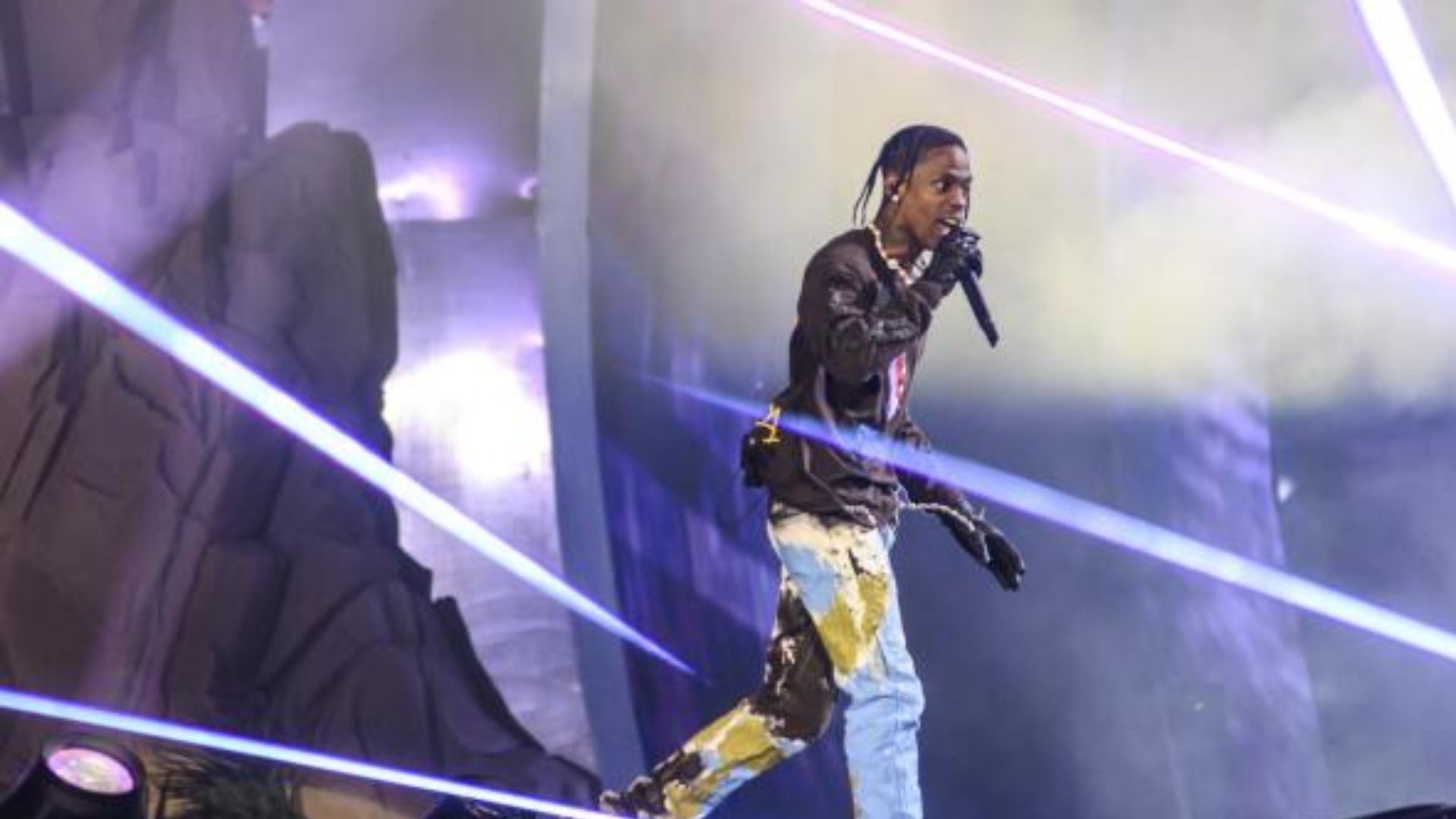
Introduction
Astroworld Festival, created by hip-hop superstar Travis Scott, was meant to be more than just a concert it was a musical universe inspired by his childhood memories of Houston’s iconic Six Flags Astroworld theme park. What began as a thrilling celebration of music, art, and culture quickly became one of the most talked-about festivals in the world.
However, the festival’s legacy took a tragic turn in November 2021, when a deadly crowd surge resulted in the loss of ten lives and injured hundreds more. This event not only shook the global music industry but also prompted serious questions about concert safety, event management, and artist accountability.
This article explores the rise of Astroworld Festival, the 2021 tragedy, and its lasting impact on live music culture.
The Birth of Astroworld Festival
Travis Scott’s Vision
Travis Scott, born Jacques Webster II, grew up in Houston, Texas a city that shaped his creative spirit. When the local Six Flags Astroworld amusement park shut down in 2005, it left a nostalgic void for many Houstonians. Years later, Scott decided to revive that energy in a new form: a festival that would merge music, art, rides, and Houston pride.
Launched in 2018, Astroworld Festival coincided with the release of his hit album Astroworld, which topped charts and earned multiple Grammy nominations. The event symbolized a homecoming for Scott and celebrated Houston’s unique culture.
A Unique Festival Experience
Unlike typical concerts, Astroworld offered a theme park-inspired environment. Each year, the festival featured carnival rides, elaborate stage setups, and immersive visual art installations. Fans described it as a “dreamlike world of sound and light,” where reality blurred into fantasy.
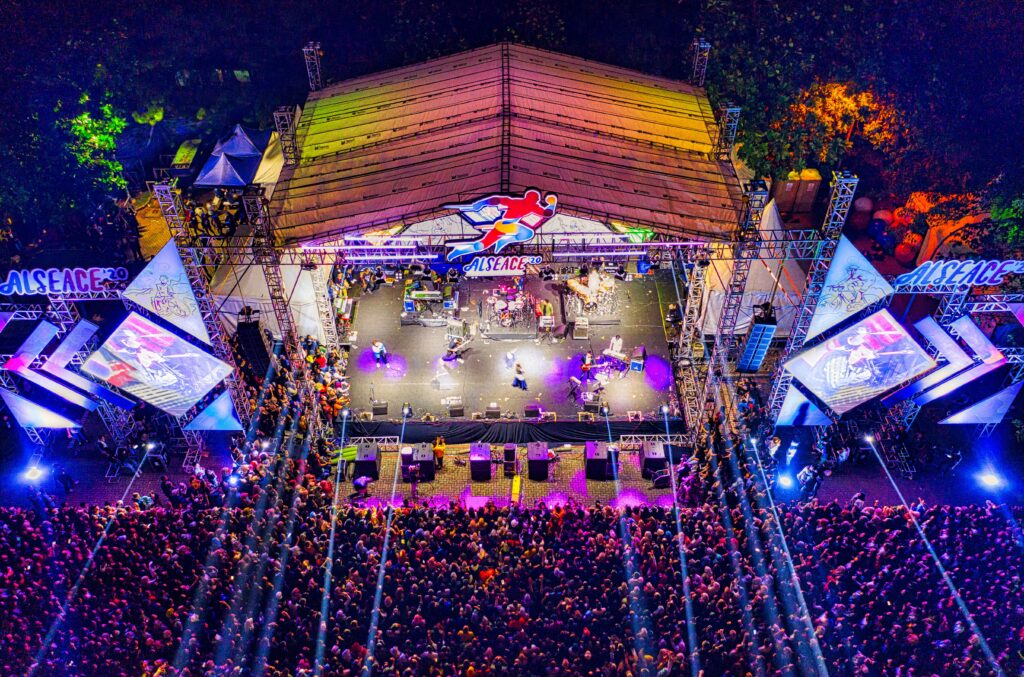
The first two editions in 2018 and 2019 were massive successes, selling out within hours and drawing fans from across the globe. The lineup included major artists such as:
- Post Malone
- Young Thug
- Lil Wayne
- Rosalía
- Pharrell Williams
Astroworld wasn’t just about music it became a cultural phenomenon symbolizing freedom, creativity, and youth energy.
The Astroworld 2021 Tragedy
The Night of the Incident
On November 5, 2021, nearly 50,000 fans gathered at NRG Park in Houston for the third edition of Astroworld Festival. The anticipation was enormous. However, as the night unfolded, tragedy struck.
During Travis Scott’s headline performance, a crowd surge occurred thousands of fans pushed toward the front of the stage, creating intense pressure and chaos. Within minutes, people began to collapse, suffocate, and lose consciousness. Despite signs of distress in the audience, the show continued for more than 30 minutes.
Casualties and Chaos
By the end of the night, ten people had died, including several teenagers, and hundreds were injured. Emergency services were overwhelmed, and videos of the incident circulated widely on social media, sparking global outrage.
Immediate Reactions
Authorities, fans, and the public demanded answers. Many questioned why the concert wasn’t stopped sooner. Travis Scott and event organizers Live Nation and ScoreMore faced severe criticism for poor crowd control, inadequate security, and delayed emergency response.
In the aftermath, hundreds of lawsuits were filed against the organizers and Travis Scott himself, with victims’ families seeking justice for what they saw as preventable deaths.
Investigation and Legal Outcomes
Who Was Responsible?
Investigations revealed several contributing factors:
- Overcrowding and lack of clear crowd control plans
- Insufficient medical staff on-site
- Failure to respond promptly to early distress signals
- Communication breakdown between event security, organizers, and performers
Although Travis Scott claimed he was unaware of the severity of the situation during his performance, many criticized him for not halting the show despite visible chaos.
Legal Actions
In 2023, nearly all wrongful-death lawsuits were settled confidentially. Some lawsuits remain pending, focusing on negligence and corporate accountability. While the Harris County grand jury declined to file criminal charges against Travis Scott, the event remains a significant case study in event management ethics.
Impact on the Music Industry
Safety Reforms and Awareness
The Astroworld disaster triggered global conversations about festival safety. Promoters and event managers began implementing stricter measures:
- Improved crowd monitoring using AI and drone surveillance
- Mandatory safety briefings for artists and staff
- Emergency stop protocols for performers
- Reduced capacity limits at high-energy concerts
Festivals like Coachella, Rolling Loud, and Lollapalooza have since enhanced their safety infrastructure and training programs.
Changes in Artist Responsibility
Before Astroworld, few artists were expected to control or stop performances during emergencies. Now, performers are encouraged and sometimes legally required to pause shows if they observe distress in the crowd. Artists such as Billie Eilish, Harry Styles, and Adele have since stopped performances mid-set to assist struggling fans, citing lessons learned from Astroworld.

Insurance and Legal Implications
Event insurance policies also evolved. Organizers now face higher premiums and stricter requirements for risk management, crowd modeling, and medical support.
Cultural and Emotional Aftermath
Fan Reactions
The tragedy deeply affected fans who once idolized Travis Scott. While some remained loyal, others boycotted his music and branded the event as a symbol of negligence and excess in modern celebrity culture.
Travis Scott’s Response
In a public statement, Travis Scott expressed grief and launched an initiative called Project HEAL, aimed at improving concert safety and providing scholarships for underserved communities. However, critics argue that the gesture was too little, too late, and that his brand image remains tarnished.
Public Debate on Accountability
The Astroworld tragedy reignited debates about artist responsibility, event oversight, and fan culture. It also exposed how social media can amplify real-time events, shaping public opinion instantly and influencing legal outcomes.
Astroworld’s Legacy in 2025 and Beyond
The End of Astroworld Festival
Following the tragedy, Astroworld Festival was permanently canceled. Travis Scott has since performed at other venues, but the shadow of Astroworld continues to follow him. For many, the festival’s name has become synonymous with both creative ambition and cautionary failure.
Influence on Future Festivals
Astroworld’s lessons have influenced new generations of festival organizers. In 2025, most large-scale festivals now include:
- Real-time crowd heat maps
- On-site mental health teams
- Emergency communication systems
- Pre-event safety simulations
These innovations are saving lives and reshaping how festivals operate.
Artistic Legacy
Despite the tragedy, Astroworld’s earlier editions revolutionized how music festivals integrate visual storytelling, digital art, and interactive environments. Its creative design still inspires stage production and virtual concert experiences in 2025.

Lessons Learned from Astroworld
1. Safety Over Spectacle
Astroworld proved that no matter how grand an event’s vision, safety must always come first. Proper planning, crowd flow design, and emergency readiness can make the difference between life and death.
2. Clear Communication
Miscommunication among staff, artists, and security was a major factor. Festivals now prioritize real-time communication systems to ensure immediate response during emergencies.
3. Accountability and Empathy
Artists and organizers must show empathy and accountability. Public trust in entertainment relies on knowing that fan well-being is valued above performance or profit.
Conclusion
Astroworld Festival was once a symbol of artistic freedom, youthful energy, and innovation. Yet, it will forever be remembered for one of the darkest moments in live music history. The tragedy of 2021 reshaped how festivals are organized, how artists engage with their audiences, and how safety is prioritized in entertainment spaces.
While the wounds left by Astroworld may never fully heal, the lessons learned continue to protect lives and inspire change in the global music industry. In many ways, Astroworld’s downfall became a turning point reminding us that the power of music must always be matched with responsibility, awareness, and care.
Entertainment
Snow Falling on Cedars: A Timeless Tale of Love, Justice, and Memory

Few novels capture the intersection of human passion, cultural prejudice, and the weight of history as powerfully as Snow Falling on Cedars, David Guterson’s award-winning 1994 masterpiece. Blending a murder mystery with a deeply moving love story, the novel is set against the backdrop of post World War II America, when prejudice against Japanese-Americans was still painfully alive.
Later adapted into a visually stunning film in 1999, Snow Falling on Cedars continues to resonate with readers and viewers, reminding us that beneath the beauty of falling snow and cedar forests lies a story of injustice, silence, and resilience.
In this blog, we’ll explore the novel’s plot, themes, characters, symbolism, and legacy, while also looking at the film adaptation and its cultural significance.
A Glimpse Into the Story
Setting
The novel is set on San Piedro Island, a fictional community in Washington State’s Puget Sound. Known for its fishing industry and close-knit population, the island becomes the stage for both romance and courtroom drama.

Plot Overview
At the heart of the story is the trial of Kabuo Miyamoto, a Japanese-American fisherman accused of murdering Carl Heine, a fellow fisherman of German descent. The trial not only raises questions about evidence and justice but also exposes the deep racial prejudices still present in the community after the war.
Parallel to the trial is the story of Ishmael Chambers, a local journalist who once had a romantic relationship with Hatsue Miyamoto, Kabuo’s wife. Their youthful love, shattered by cultural divides and wartime internment, haunts both characters as adults.
The courtroom drama unfolds while memories of love, war, and prejudice resurface. Ultimately, the novel questions whether truth and justice can prevail in a world clouded by bias.
Themes and Motifs
1. Racism and Prejudice
One of the central themes of Snow Falling on Cedars is racial prejudice against Japanese-Americans. After the attack on Pearl Harbor, thousands of Japanese-American families were forced into internment camps. Even after the war, suspicion and resentment lingered. Kabuo Miyamoto’s trial is less about facts and more about these societal biases.
2. Love and Loss
The doomed romance between Ishmael and Hatsue highlights the painful consequences of cultural divisions. Despite their deep affection, Hatsue ultimately chooses her Japanese heritage over a forbidden love, leaving Ishmael heartbroken.
3. War and Memory
The novel examines how war shapes individuals and communities. Ishmael, a war veteran who lost his arm, struggles with both physical and emotional scars. The community itself bears collective wounds, shaping how people judge one another.
4. Justice and Truth
The courtroom setting becomes a metaphor for truth-seeking in the face of prejudice. The novel asks: Can justice truly be blind, or is it always clouded by human bias?
5. Nature and Symbolism
The recurring imagery of snow and cedar trees reflects both beauty and silence. Snow covers the island, symbolizing purity but also concealment, while cedars represent endurance and the weight of history.
Characters
Kabuo Miyamoto
A quiet, disciplined fisherman accused of murder. Kabuo embodies the struggles of Japanese-Americans in postwar America caught between loyalty to their heritage and prejudice from their neighbors.
Hatsue Miyamoto
Kabuo’s wife and Ishmael’s former love. Hatsue is torn between duty to her family and her personal feelings, representing the complexity of cultural expectations.
Ishmael Chambers
The local journalist who lost his arm in World War II. Ishmael’s unhealed wounds—both emotional and physical reflect the personal cost of war. His bitterness over losing Hatsue influences his judgment, making him a morally complex character.
Carl Heine
The murder victim, whose death sparks the trial. His background and strained relationship with Kabuo highlight tensions over land, heritage, and pride.
Nels Gudmundsson
Kabuo’s defense lawyer, who champions fairness and justice despite the odds.
Symbolism
- Snow: Represents silence, concealment, and purity. Just as snow covers the island, truth is hidden beneath layers of prejudice and memory.
- Cedars: Symbolize endurance, history, and nature’s permanence compared to human conflicts.
- The Sea: Represents both livelihood and danger, highlighting the connection between the islanders and nature’s unpredictability.

- Ishmael’s Arm: A symbol of loss, sacrifice, and the lasting scars of war.
The Writing Style
Guterson’s prose is poetic, descriptive, and deeply atmospheric. His writing captures both the natural beauty of the Pacific Northwest and the emotional depth of his characters. The alternating perspectives between courtroom scenes, flashbacks, and inner thoughts create a layered narrative that feels both intimate and universal.
The 1999 Film Adaptation
Directed by Scott Hicks, the film adaptation of Snow Falling on Cedars is visually stunning, though it received mixed reviews for pacing.
Highlights of the Film:
- Cast: Ethan Hawke (Ishmael Chambers), Youki Kudoh (Hatsue), Reeve Carney, and Max von Sydow.
- Cinematography: Known for breathtaking visuals of snow, sea, and forests, capturing the haunting beauty of the setting.
- Tone: Moody and atmospheric, reflecting the novel’s themes of silence and memory.
While the novel delves deeply into character psychology, the film emphasizes mood and visual storytelling. Many critics praised its artistry but noted that it lacked some of the emotional complexity of Guterson’s prose.
Critical Reception
- The novel won the 1995 PEN/Faulkner Award for Fiction.
- It was a bestseller, translated into multiple languages.
- The film adaptation received Academy Award nominations for cinematography but was less commercially successful.
Legacy of Snow Falling on Cedars
More than 30 years after its publication, Snow Falling on Cedars remains a literary classic studied in schools and universities. Its themes of prejudice, love, and justice continue to resonate in contemporary society.
The story reminds us that history’s injustices linger long after the events themselves, and that silence like snow can hide painful truths.
FAQs
1. What is Snow Falling on Cedars about?
It’s about a Japanese-American fisherman accused of murder, a courtroom trial, and the lingering effects of racism, war, and forbidden love.
2. Is Snow Falling on Cedars based on real events?
While the characters and island are fictional, the novel draws on real historical events—especially the internment of Japanese-Americans during WWII.
3. What genre is Snow Falling on Cedars?
It blends literary fiction, historical fiction, and courtroom drama.
4. Is the film faithful to the book?
The 1999 film captures the novel’s atmosphere and visuals but condenses character depth, focusing more on visuals than internal struggles.
5. Why is the novel significant today?
Its exploration of racial prejudice and justice remains deeply relevant in a world still grappling with issues of discrimination.
Conclusion
Snow Falling on Cedars is more than a murder mystery it’s a meditation on love, prejudice, and memory. Through the snow-covered cedar forests of San Piedro Island, David Guterson paints a haunting portrait of a community struggling to reconcile truth with bias, love with duty, and past with present.
Nearly a century after the events it depicts, its lessons remain vital: truth can be buried under silence, but like snow melting in spring, it eventually comes to light.
Entertainment
The Exciting World of Baseball Video Games: A Complete Guide

Introduction
Baseball is one of the most beloved sports in the world, and for decades, baseball video games have allowed fans to experience the thrill of the game right from their living rooms. Whether you enjoy managing a team, hitting home runs, or reliving the glory of legendary players, baseball video games bring the spirit of the ballpark to life.
In this blog, we’ll explore the history, top titles, gameplay styles, and future trends of baseball video games.
A Brief History of Baseball Video Games
The journey of baseball in the gaming industry dates back to the late 1970s and early 1980s. Early titles like Atari’s Home Run (1978) and Nintendo’s Baseball (1983) were simple, with minimal graphics and mechanics. However, these games laid the foundation for what would become a beloved gaming genre.
By the 1990s, titles such as RBI Baseball and Ken Griffey Jr. Presents Major League Baseball elevated the genre with better graphics and licensed teams. Today, modern baseball games combine advanced visuals, realistic physics, and online multiplayer modes to create an immersive experience.

Popular Games to Play
1. MLB The Show Series
- Available on PlayStation, Xbox, and Nintendo Switch.
- Known for its realism, detailed graphics, and official MLB licenses.
- Offers modes like Road to the Show (career mode), Diamond Dynasty, and Franchise Mode.
2. RBI Baseball
- A simpler, arcade-style game.
- Great for players who want quick, fun matches without deep simulation.
3. Super Mega Baseball
- Focuses on fun gameplay with cartoon-style graphics.
- Still offers advanced mechanics like pitching strategies and team customization.
4. Out of the Park Baseball (OOTP)
- A text-based simulation game.
- Perfect for fans who love managing rosters, finances, and strategies behind the scenes.
Why People Love Baseball Video Games
- Realism and Immersion – From player animations to stadium details, modern games look almost like live broadcasts.
- Accessibility – Fans who can’t attend real matches still enjoy the game virtually.
- Variety of Gameplay – Whether you like arcade fun or deep management, there’s a baseball game for you.
- Community & Online Play – Competing against friends worldwide adds excitement.
The Future of Baseball Video Games
With technology evolving, baseball games are becoming even more realistic. Expect to see:

- Virtual Reality (VR) baseball games where you swing using motion controls.
- AI-driven gameplay with smarter opponents.
- Esports tournaments featuring baseball titles.
FAQs About Baseball Video Games
Q1: What is the most realistic baseball video game?
MLB The Show is widely considered the most realistic due to its official MLB licenses, player likeness, and advanced mechanics.
Q2: Can I play baseball games on PC?
Yes, options like Out of the Park Baseball and Super Mega Baseball are available on PC.
Q3: Are there free baseball video games?
Yes, some mobile games and online platforms offer free-to-play baseball experiences.
Q4: Which is better: arcade or simulation baseball games?
It depends on your style. Arcade games are quick and fun, while simulations are detailed and realistic.
Q5: Will VR baseball games become popular?
With VR growing fast, baseball VR titles are expected to become mainstream in the near future.
Conclusion
Baseball video games have come a long way from pixelated batters to lifelike simulations. Whether you’re a casual fan or a hardcore gamer, there’s a baseball game that suits your style. From MLB The Show to indie hits like Super Mega Baseball, the digital diamond is as exciting as the real one.
-

 Fashion3 months ago
Fashion3 months agoThese ’90s Fashion Trends Are Making a Big Comeback in 2025
-

 Fashion3 months ago
Fashion3 months agoTop Fashion Trends to Follow in August 2025
-

 How-To Tutorials & Troubleshooting3 months ago
How-To Tutorials & Troubleshooting3 months agoHow to Fix Missing Pantone Color Books in Adobe Illustrator 2024-2025 (Free and Easy Method)
-
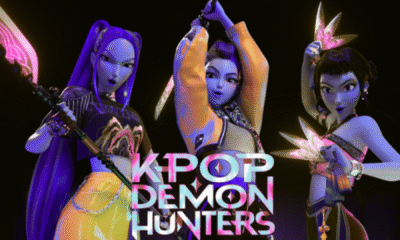
 Entertainment3 months ago
Entertainment3 months agoTrending Soundtrack: “KPop Demon Hunters”
-
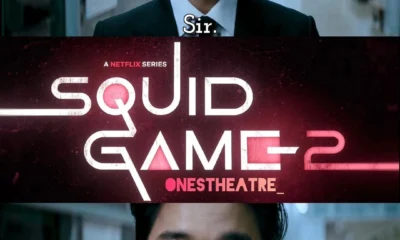
 Entertainment3 months ago
Entertainment3 months agoSquid Game Season 2: Deadlier Games, Deeper Secrets & Darker Drama




